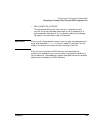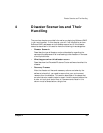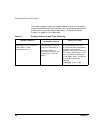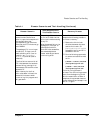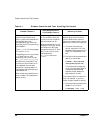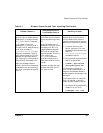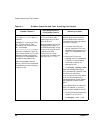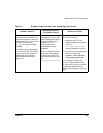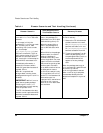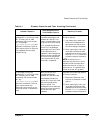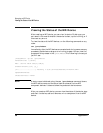
Disaster Scenarios and Their Handling
Chapter 4 91
This failure is the same as the
previous failure except that the
package (P1) is configured with
RPO_TARGET set to 60 seconds.
In this case, initially the
package (P1) is running on N 1.
P1 uses a mirror md0 consisting
of S1 (local to node N1 -
/dev/hpdev/mylink-sde) and
S2 (local to node N2). The first
failure occurs when all FC links
between the two data centers
fail, causing N1 to lose access to
S2 and N2 to lose access to S1.
After the package resumes
activity and runs for 20 seconds,
a second failure occurs causing
N 1 to fail, perhaps due to power
failure.
Package P1 continues to run
on N1 after the first failure
with md0 consisting of only
S1
After the second failure,
package P1 fails over to N2
and starts with S2. This
happens because the disk
S2 is non-current by less
than 60 seconds. This time
limit is set by the
RPO_TARGET parameter.
Disk S2 has data that is
older than the other mirror
half S1.
However, all data that was
written to S1 after the FC
link failure is lost
In this scenario, no attempts are
made to repair the first failure
until the second failure occurs.
Typically, the second failure occurs
before the first failure is repaired.
1. To recover from the first
failure, restore the FC links
between the data centers. As a
result, S1
(/dev/hpdev/mylink-sde) is
accessible from N2.
2. Run the following command to
add S1 to md0 on N2:
# mdadm --add /dev/md0
/dev/hpdev/mylink-sde.
This command initiates the
re-mirroring process. When it is
complete, the extended distance
cluster detects S1 and accepts it as
md0 again.
For the second failure, restore N1.
Once it is restored, it joins the
cluster and can access S1 and S2.
1. Run the following command to
enable P1 to run on N1
# cmmodpkg -e P1 -n N1
Table 4-1 Disaster Scenarios and Their Handling (Continued)
Disaster Scenario
What Happens When
This Disaster Occurs
Recovery Process



